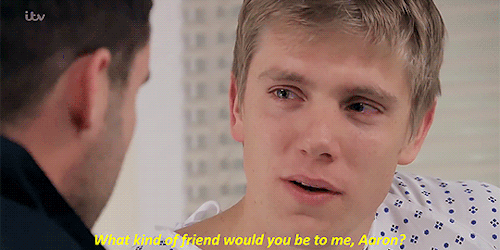- Before (Antecedents): Teacher claims “John, take a seat. “
- During: (Behavior): John screams.
- After: (effects): instructor states “No screaming” and takes John to time-out.
Antecedents reveal concerning the context for the event and might assist us to recognize causes which set off a specific behavior. An antecedent might be an action done because of the learning pupil or by other people within the environment. As an example, an antecedent could be the instructor asking the pupil to stay down. The behavior could be the pupils issue behavior that the instructor is attempting to improve. Inside our instance, the pupils issue behavior is really a scream in reaction into the instructors request to take a seat. Effects inform us by what occurred following the behavior took place. Effects can be done by other people into the environment. Within the instance, the consequence ended up being that the teacher said “No screaming” and led the pupil to time-out.
A-B-C Model Example:
This is certainly a good example of a recording that is a-b-c. Observe that some sections that are antecedent blank.
Which means the consequence when it comes to past behavior additionally served whilst the antecedent that produces the behavior that is next. Record the consequence since it is seen, regardless of if the consequence will not change or stop effectively the difficulty behavior. With a few training, instructors should be able to record the antecedents and effects of these students problem behaviors.
Step three: produce a theory to look for the intent behind the behavior.
After obviously determining the behavior, we must carefully examine the problem behavior it self. How come the behavior happen? Just how do we all know as soon as the behavior is mostly about to take place? Students’s habits will likely to be duplicated if the behavior yields their desired result. Think about: what’s the result as he shows this behavior?
Types of results:
- Does he get one thing he desires?
- Does he arrive at avoid something that is doing?
Behavior does occur for 2 fundamental reasons: to achieve one thing also to avoid one thing. Pupils may choose to gain attention, concrete items, or sensory input. Or, pupils might want to avoid tasks, difficult tasks, or projects in a specific topic.
As soon as the function or goal is always to gain one thing:
Pupils might want to gain one thing, such as for instance social attention from peers, the instructor, or other grownups; use of concrete products such as for example a toy that is favorite other items including the course computer; or even get some good variety of sensory experience or stimulation. They could deliberately work down by throwing a tantrum, yelling or yelling, getting an object from someone else, making noises, acting once the course clown, or any other improper actions.
Samples of gaining item/objects:
- Personal attention: whenever behavior gains peer or teacher attention towards the pupil such as for instance speaking with peers during separate work time.
- Tangible: if the behavior results in access to chosen occasions or materials such as for instance taking other people materials.
- Sensory: once the behavior provides auditory, artistic, or stimulation that is tactile as tapping from the desk while working or human anatomy rocking.
If the objective or function is always to avoid one thing:
Students may choose to avoid one thing, such as for example scholastic tasks or uncomfortable situations that are social. They might deliberately break course guidelines become provided for time-out, that also leads to a break from educational instruction. They might avoid other students during social circumstances such as for example lunchtime, homeroom, or recess. It ought to be noted that the pupil may choose to getting away from tasks which he discovers unpleasant, no matter if the task is straightforward or enjoyable for grownups or other pupils. Escape: if the behavior leads to the learning pupil being taken out of a scenario that he discovers unpleasant.
Illustration of avoidance:
- Asking to attend the nursing assistant during mathematics each day
- Chatting down throughout a test to become delivered to the principals workplace, hence avoiding using the test
- Crying or refusing to cooperate or focus on a task or directive
Step four: Select a replacement behavior that is appropriate.
At the start of the Behavior Change module, we talked about pupil inspiration. Why should a student make use of the appropriate behavior a instructor would like to see in the place of continuing to utilize the situation behavior? Most likely, the present behavior is doing work for the pupil! The behavior that is new be taught needs to be very carefully opted for because of the instructor to be quicker and more effective compared to the problem behavior while meeting exactly the same function for the pupil. As an example, young kids figure out how to talk since it is a quicker and more efficient means to have their demands came across. A teacher or parent must use a process of elimination to determine what the child needs if a toddler cries. Is he hungry, tired, harmed, or damp? Whenever a young child learns to talk, he is able to especially ask for just what he requires and quickly get it. A young child continues to talk since it is more effective than crying and fulfills the exact same purpose of gaining  adult attention or chosen items.
adult attention or chosen items.
To select a suitable replacement behavior:
- Observe appropriate habits shown by typical kiddies when you look at the environment that is same.
- Utilize the purpose of the situation behavior to locate a far right & expedient behavior with all the function that is same.
- The behavior that is appropriate be an alternate behavior or an even more appropriate level when it comes to problem behavior.
Think about: exactly exactly just What could he do as opposed to doing the issue behavior? Keep in mind, a alternate behavior is really a behavior that acts the exact same are the issue behavior, is age-appropriate for the pupil and easier or quicker to execute.
Samples of alternate actions:
- Seeking doll rather than getting it
- Increasing hand in the place of calling out
- Asking for assistance in the place of maybe perhaps not finishing work
Consider: Would the situation behavior be appropriate if done at a level that is different? Keep in mind, some actions are improper only once done at extreme amounts. Pupils generally need certainly to speak at a moderate degree, work on a moderate rate, and connect to other people an amount that is moderate. Problem habits might be a behavior extra where in actuality the behavior is carried out all too often, or perhaps a behavior deficit where in actuality the behavior is completed not enough.

 Auctioneers
Auctioneers Shopping Mall
Shopping Mall Money Lenders
Money Lenders